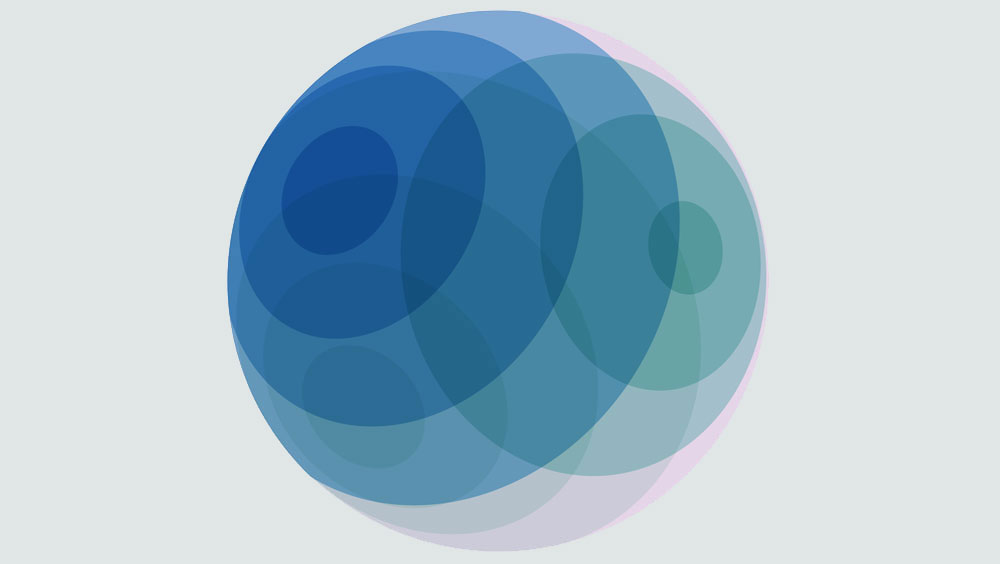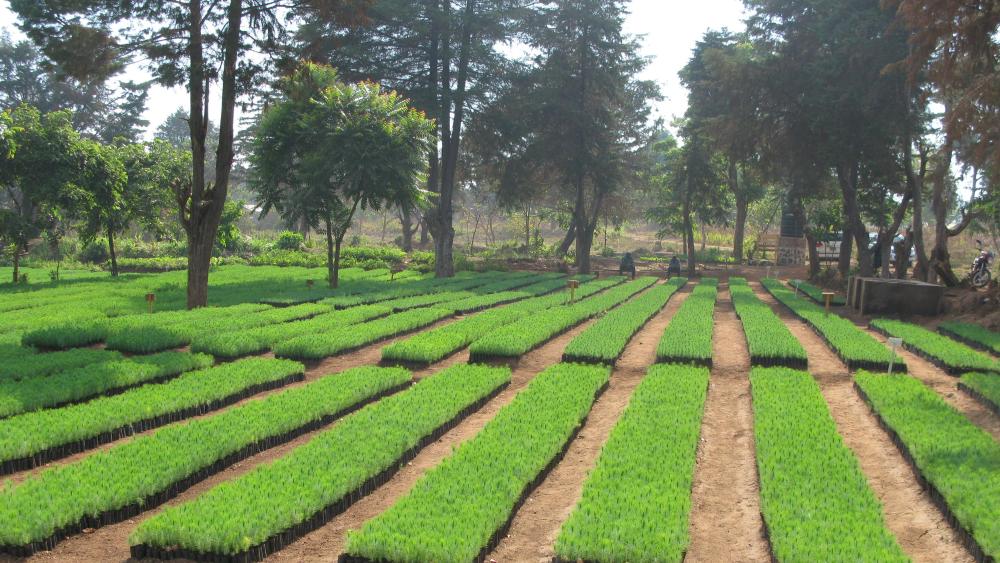Climate and natural resources

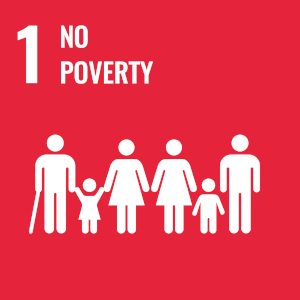
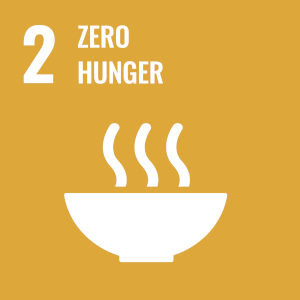
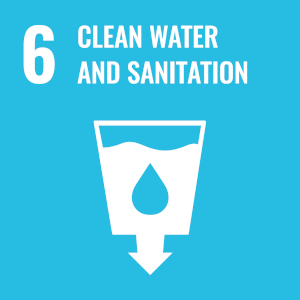
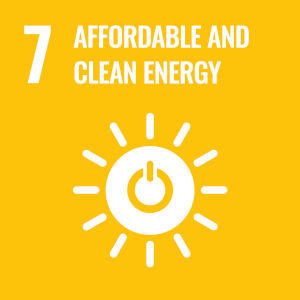
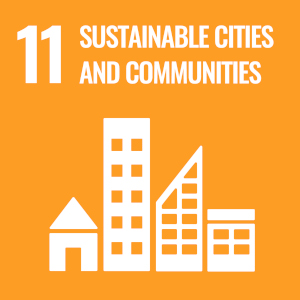
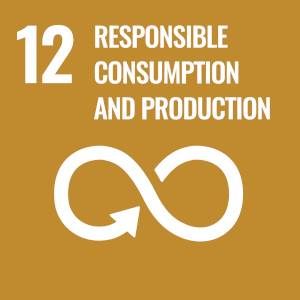
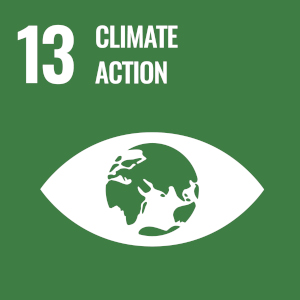
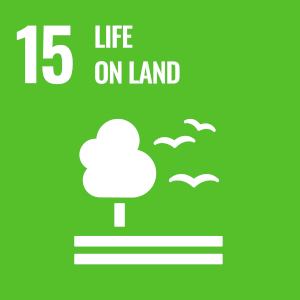
Climate change and biodiversity loss endanger sustainable development
The impacts of climate change, environmental degradation and biodiversity loss are increasingly felt and threaten the achievement of the Sustainable Development Goals, especially in developing countries.
The latest climate and environmental reports by the scientific community are becoming increasingly concerning. Several countries have increased the level of ambition of their climate targets, but implementation might fall short of expectations. The amount of carbon dioxide in the atmosphere continues to increase despite the temporary reduction in greenhouse gas emissions caused by the COVID-19 pandemic.
Due to climate change, the number and intensity of extreme weather events have increased. In 2020, approximately 30 million people had to leave their homes at least temporarily due to weather and climate-related disasters.
Climate change also has a significant impact on water resources and food security, which are prerequisites for all development. The global coverage of water supply is increasing slowly despite population growth. Water is often the basis for transboundary cooperation, but sometimes it is also a subject of controversy and an instrument in armed conflicts.
There are major regional differences in the attainment of food security: for example, the number of children suffering from chronic malnutrition has decreased everywhere except in Africa. Nearly all countries have developed a national pathway to transform the food system more sustainable.
The area of forests associated with protected areas and sustainable use plans has increased and now covers more than half of the world's forests. The protection of forest ecosystems is one of the few objectives of the Convention on Biological Diversity, which has already been achieved. However, deforestation is still continuing globally, but at a slower pace than before.
Solar and wind power are the most affordable energy sources in many places, providing off-grid communities and businesses with improved access to electricity. While billions of people still rely on solid fuels for cooking and heating their homes, with significant adverse health and environmental impact, clean cooking and heating solutions are becoming more widely available.
Finland promotes stronger climate and environment action
Finland develops weather and warning services
Finland improves access to safe water and sanitation
Finland promotes better food systems
Finland supports the sustainable management of forests
Finland promotes the use of renewable energy
Action Plan for Climate Smart Foreign Policy
Weather and warning services to Vietnam
Community warning systems for Nepal
For example, in the flood-prone areas of Morang and Sunsar in Eastern Nepal, the risks and needs of communities were assessed in cooperation with Nepal's Red Cross and the Department of Hydrology and Meteorology of Nepal. The ready, customised warning systems cover almost 40,000 people. While the operating models for these systems vary, they usually include a combination of weather services and community monitoring, such as water level gauges, on the basis of which local groups alert communities and authorities.
Climate resilient and low emission development
State-of-the-art Finnish technology and expertise help countries prepare for the impacts of climate change.
Climate finance is one of the ways Finland bears global responsibility and an obligation of the UN's climate agreements. International climate finance supports the low emission development of developing countries and their adaptation to climate change.
Most of Finland's public international climate finance is channelled through development banks, multilateral organisations and climate funds. Through its work on the boards, Finland has contributed to ensuring that banks and multilateral actors pursue the objectives of the Paris Agreement and that their climate projects also promote human rights, gender equality and non-discrimination.
Development financing in the form of loans and investments has promoted the deployment of renewable energy and energy efficiency, thus mitigating climate change. This has also accelerated the implementation of climate solutions in the private sector. Cooperation with state institutions and universities has increased climate expertise in developing countries. Civil society organisations have supported, for example, the climate resilient cultivation methods of village communities and the diversification of livelihoods.
Finland is reaching its target of balanced distribution of grant-based mitigation and adaptation finance recorded in the Government Programme. The share of adaptation finance has been increased with recent investments in multilateral funds, which have improved millions of people's chances of coping with the adverse effects of climate change.
For example, more than 16 million people had benefitted from the adaptation measures supported by the Least Developed Countries Fund LDCF by 2020. In addition, the new projects under way and approved in 2021 will benefit more than 8 million people. Thanks to the Adaptation Fund AF, the vulnerability of more than 10 million people to the impacts of climate change had decreased by 2021. The projects approved by the Green Climate Fund GCF by 2021 will improve the climate resilience of more than 588 million people.
Finland plays a more prominent role than previously in international discussions on adaptation finance. For example, Finland was involved in the establishment of the Champions Group on Adaptation Finance, which promotes adaptation finance and includes 11 countries, the EU Commission and the African Development Bank.
An important part of Finland's support for developing countries is work to improve their weather, climate and early warning systems. In 2019-2021, the Finnish Meteorological Institute improved the capacity of a total of 48 national meteorological and hydrological services or other organisations in 12 countries. As a result of cooperation, improved weather and climate services and early warning systems will indirectly benefit more than 500 million people. Finland is also funding the multilateral fund CREWS, which has improved the capacity of 60 least developed countries or small developing island states to face climate risks and introduce early warning services.
Emission reductions achieved with Finland’s support
Expected cumulative emission reduction (MtCO2e)
| AAll projects | |
|---|---|
| GCF 2021 | 1980 |
| GEF 2021 | 1446 |
| GEF 2020 | 1251 |
| NDF 2021 | 81 |
| BOngoing projects | |
|---|---|
| AfDB 2019 | 385 |
| GCF 2019 | 324 |
| CNew projects | |
|---|---|
| ADB Ventures 2021 | 1,8 |
| NDF 2020 | 0,145 |
| NDF 2019 | 0,052 |
| EEP 2020 | 0,105 |
| EEP 2019 | 0,16 |
Expected annual emission reduction (MtCO2e)
| DAll projects | |
|---|---|
| IFC-Finland 2020 | 0,575 |
| EOngoing projects | |
|---|---|
| EEP 2020 | 0,434 |
| EEP 2019 | 0,427 |
| E5P 2020 | 1,1 |
Achieved cumulative emission reduction (MtCO2e)
| FAll projects | |
|---|---|
| EEP 2020-2021 | 1,9 |
| EU 2018-2020 | 57,4 |
| EU 2013-2019 | 28,2 |
| NDF 2021 | 70 |
| GOngoing projects | |
|---|---|
| GCF 2021 | 54 |
| GCF 2019 | 48 |
| IFAD 2021 | 59 |
Achieved annual emission reduction (MtCO2e)
| HOngoing projects | |
|---|---|
| ADB Ventures 2021 | 0,126 |
| Finnfund 2020 | 0,177 |
| Finnfund 2019 | 0,135 |
| AfDB 2021 | 1,066 |
| AfDB 2020 | 1,636 |
| AfDB 2019 | 0,678 |
| IDA 2021 | 11,6 |
| IDA 2018-2020 | 28,4 |
| EEP 2021 | 0,155 |
| EU 2020 | 0,921 |
| EU 2019 | 0,799 |
| ICompleted projects | |
|---|---|
| ADB 2021 | 17,807 |
| ADB 2020 | 19,325 |
| NCF 2021 | 0,46 |
| NCF 2019 | 0,055 |
REFERENCE DATA: Finland's annual greenhouse gas emissions are approximately 50 MtCO2e
The ways to report on emission reductions vary between organisations. The most common way is to report the cumulative expected emission reduction over the entire life cycle of projects. The estimate might cover either all projects regardless of their implementation stage, ongoing projects or new projects that have received a funding decision during the reporting year (reporting methods A-C). Another method is to examine the estimated annual emission reduction potential (methods D-E). On the other hand, achieved emission reductions can be reported cumulatively (methods F-G) or annually (method H). Another method is the average annual reduction achieved during the life cycle of completed projects (method I). The different methods are not comparable and the amounts cannot be added together. In addition, the reporting practices of organisations might vary from year to year and the reported figures can overlap. For example, projects financed by the GCF are implemented by several organisations that also receive direct funding, such as the AfDB, GEF and IFAD.
Better nutrition and sustainable food systems
The support received by smallholder farmers has improved the food security of families and diversified their diets.
Sustainable food systems guarantee food security and good nutrition for everyone as well as livelihoods for food system actors without adverse impacts on the environment.
Finland improves food security and nutrition mainly through multilateral organisations. The International Fund for Agricultural Development IFAD, supported by Finland, has provided better food security for 128 million people by improving the sustainable agriculture practices and market access of smallholder farmers. The World Bank's nutrition and health programmes reached about 450 million people between 2019 and 2021.
Finland also improves the sustainability of food systems through international policy dialogue. For example, Finland's initiative to expand school meals has already inspired more than 70 countries to participate.
Finland's support through bilateral projects and civil society organisations has improved food security and business opportunities for 578 000 people. In Ethiopia, more than 4,000 women and young people as well as 63 cooperatives have been provided with loans and training. This has made it possible to diversify livelihoods and start businesses.
Food and Forest Development Finland (FFD), which focuses on the development of agriculture and forestry, has created the Building Resilience tool, which supports the adaptation of smallholder farmers to the impacts of climate change already in ten countries.
Agriculture is a major employer, which is why it is a focus of investments. In 2019-2020, Finnfund's investments in agriculture benefitted 3.5 million people of whom 84 per cent were women. 57 per cent of the investments made by the Finn Church Aid’s FCA investment company focused on agriculture.
IFAD’s results in 2020
IFAD, which is supported by Finland, is the UN's International Fund for Agricultural Development.
128 million people reached
23,4 million Financial services for 23.4 million people
1,5 million members of farmers’ organisations have received support
1,7 million hectares of climate smart agriculture
3,7 million people trained in income generating activities
73 800 Improved land ownership for 73,800 people
560 000 Improved irrigation on 560 000 hectares of agricultural land
Source: IFAD
Bringing a gender perspective to food security
Bringing land administration to the digital age
Solar power improves the quality of teaching in the West Bank
Energy self-sufficiency and climate change mitigation
Finland’s support has provided millions of people with access to clean energy solutions. Finland also coordinates with development banks to phase out financing to fossil energy.
Finland's assistance in the energy sector is mainly channelled through multilateral development banks, Finnfund and climate funds.
Development banks support the transition of developing countries to a low emission economy by providing technical assistance to reform energy and climate regulations. Development banks finance both public and private sector investments in energy production, transmission and distribution. Financing from development banks is needed to mitigate the risks associated with private investment in fragile states or in other difficult operating environments. Through multilateral funding, Finland has contributed to improved clean energy access for 94 million people in 2020-2021.
Finland and other like-minded countries have contributed to phasing out financing to fossil fuel investments by development banks. Finland also emphasises the just transition in fossil fuel-dependent countries, minimising negative impacts on communities in and economies of developing countries.
Local renewable energy solutions supported by Finland have increased the energy self-sufficiency of communities. Thanks to the support, communities have been able to secure health, food and transport services even in emergency conditions, such as during the COVID-19 pandemic, natural disasters and crises. The Finland Ukraine Trust Fund has built local technical capacity in energy efficiency and heat supply and increased cooperation with Finnish companies.
Results of the EEP project in 2021
155,170 tCO2e avoided greenhouse gas emissions
28 MWh annual production of renewable energy
217,660 people with improved access to clean energy
50.3 million mobilised climate finance
3.5 million annual savings in energy supply
1,200 new jobs
The African Energy and Environment Partnership Program (EEP) supports start-ups, especially women-led businesses, in the development of energy entrepreneurship in 15 countries in Southern and East Africa. EEP Africa was established by Finland in 2010 and is currently managed by the Nordic Development Fund (NDF).
Water supply, sanitation and water diplomacy
Finland’s support has provided access to safe water and sanitation for millions of people. With water diplomacy, Finland prevents, mitigates and resolves water related tensions and conflicts.
Climate change alters hydrological cycle causing varying changes in water resources (droughts and floods). Therefore, preventing, mitigating and resolving conflicts related to shared waters will be increasingly important in the future.
Finland is a valued pioneer in international water policy and diplomacy. Finland initiated the UN Water Convention on transboundary watercourses and supports its widespread adoption and application. Finland also considers water diplomacy to be preventive peace mediation, as the countries with appropriate transboundary water cooperation do not enter into conflict with one another.
Finland’s results in bilateral water cooperation are still significant, but allocations to water are decreasing, which will lead to declining results in future. Climate change will inevitably exacerbate the demand for future involvement in the water sector.
Finland's cooperation in the water sector continues mainly in the rural Ethiopia and Nepal, where 1.5 million people gained access to at least basic level water supply with Finnish support in 2019-2021. During that same period, around half a million people built sanitation facilities at their homes with Finnish support. In addition, water supply, sanitation and hygiene facilities were built in 700 schools and health centres. The projects drew special attention to the needs of persons with disabilities and gender equality.
Finland supports each community’s own active approach in sanitation. Water resources management emphasises long-term planning, empowerment of women and girls, inclusion of and ownership by communities and equal treatment of people.
Finland also provides assistance through core funding to development cooperation in the water sector implemented by multilateral organisations. However, Finland does not directly participate in implementation of these programmes.
Please enter a valid video URL.
The URL can point to any video file or a Youtube video.
People provided with improved water supply and sanitation
Number of people who have benefited
Source: Ministry for Foreign Affairs of Finland
Handwashing with water and soap in Nepal
In the programme, the use of water resources was planned comprehensively, taking into account needs for different uses and user groups. Rural communities adopted healthier behaviours, such as those related to menstrual hygiene management and handwashing with water and soap. More than 7,000 households reached behavioural change, for example washing their hands before cooking and after going to the toilet.
Local ownership increased during the project. By the end of 2021, municipalities funded the programme by EUR 8.2 million and the local communities contributed EUR 10.9 million.
The abundance of iconic species indicates biodiversity
Poaching is a major problem in East Africa. Just four years ago, Ugandan, Kenyan and Tanzanian authorities did not believe that poaching could be eradicated completely. However, at the end of 2021, it was already possible to set a target for the complete eradication of poaching in protected areas.
In 2020, for the first time in 35 years no rhinos were poached in Kenya. The number of rhinos in the area has increased by 250 individuals and the number of elephants by 10,000 in 2018-2021.
Sustainable forest management
Finnish support has increased the area covered by sustainably managed forests. Forest data online tool created with the help of Finland is used in more than 150 countries.
Finland continues to be known for its cooperation in the forest sector in many developing countries. In Tanzania, projects supported by Finland have promoted adaptation to climate change by expanding the area of natural forests managed by communities, balancing the water cycle and improving people's livelihoods.
Finnish civil society organisations have helped in promoting the implementation of land rights in Nepal, India and Brazil. Finland was involved in influencing decision-makers to include decisions that strengthen land tenure by indigenous and local populations in the Glasgow Forest Declaration and the UN Convention to Combat Desertification.
Finnish support has ensured that the total area of forests and other land areas used in a sustainable manner has grown. Forest areas have increased through the work of civil society organisations, but they have decreased in bilateral cooperation when many of the projects have ended.
Finnfund's investments have produced new FSC certified plantation forests and sustainably managed natural forests. Finnfund is one of the few development impact investors that make commercial investments in the forest sector, and it is therefore a pioneer in the sector.
In total, over 350,000 people have benefitted from Finland’s forest sector assistance in 2019-2021, and at least 34 per cent of these people were women and girls. In addition, nearly 62,000 people or small businesses have been included in the value chains of forest products.
The further development of existing forest management planning, data collection and reporting tools created in cooperation with the UN Food and Agriculture Organisation FAO has continued. The Internet service already has 30,000 users in more than 150 countries.
Land area brought under sustainable use
Land area brought under sustainable use in 2019-2021, hectares
7 196 000 Cooperation with civil society organisations53
335 100 Private sector cooperation56
165 000 Bilateral cooperation54
103 150 000 Global Environment Fund (GEF) and International Fund for Agricultural Development (IFAD)57
167 300 UN Food and Agriculture Organization FAO55
108 072 000 European Union58
Source: Ministry for Foreign Affairs of Finland
- 1
United Nations (2021). The Sustainable Development Goals Report 2021. https://unstats.un.org/sdgs/report/2021/(Link to another website.)
- 2
World Bank (2022). Pandemic, Prices and Poverty.
https://blogs.worldbank.org/opendata/pandemic-prices-and-poverty(Link to another website.) Referenced on 4.10.2022. - 3
World Bank (2022). World Development Indicators. Foreign direct investment, net inflows (BoP, current US$), personal remittances, received (current US$), net official development assistance received (current US$). DataBank. https://databank.worldbank.org/(Link to another website.) Referenced on 6.7.2022.
- 4
Finnish civil society organisations, including World Vision Finland, the International Solidarity Foundation and FIDA as part of the broader SRHR communication work and the results achieved by UNFPA with support from Finland.
- 5
UNESCO Institute for Statistics (2022). Completion rate, lower secondary, female %. http://sdg4-data.uis.unesco.org/(Link to another website.) Referenced on 4.10.2022.
- 6
The data was collected from aggregate indicator 'Number of teachers who received pre or in service training' from the following interventions: HEI-ICI programme, projects and programmes coordinated by the Finnish Bible Society, Wycliff, Finn Church Aid, FIDA, the Finnish Refugee Council, Disability Partnership Finland and Taksvärkki.
- 7
Finnish civil society organisations, including World Vision Finland, the International Solidarity Foundation and FIDA as part of the broader SRHR communication work and the results achieved by UNFPA with support from Finland.
- 8
The data was collected from aggregate indicator 'Number of teachers who received pre or in service training' from the following interventions: bilat¬eral assistance and sector programmes in Nepal, Ethiopia, Mozambique, Myanmar, Palestinian Territories and Ukraine, as well as from UNESCO’s Capacity Building for Education programme.
- 9
The data was collected from aggregate indicator 'Number of teachers who received pre or in service training' from the following interventions: HEIICI programme, projects and programmes coordinated by the Finnish Bible Society, Wycliff, Finn Church Aid, FIDA, the Finnish Refugee Council, Disability Partnership Finland and Taksvärkki.
- 10
The data was collected from aggregate indicator 'Number of teachers who received pre or in service training' from the following interventions: bilateral assistance and sector programmes in Nepal, Ethiopia, Mozambique, Myanmar, Palestinian Territories and Ukraine, as well as from UNESCO’s Capacity Building for Education programme.
- 11
Participating countries include those supported through UNESCO's CAP Ed programme and Finland's bilateral cooperation partner countries, where Finland supports structural reforms of the school system.
- 12
The data was collected from aggregate indicator 'Number of educational institutions whose capacity has been strengthened' (schools) from inter¬ventions in the following countries: Nepal, Myanmar (Sector Programme and Education Support to promote education in Ethnic Regions), Ethiopia and Ukraine.
- 13
The data was collected from aggregate indicator 'Number of educational institutions whose capacity has been strengthened' (schools) from the following interventions: Wycliffe, Finn Church Aid, Finnish Refugee Coun¬cil, Taksvärkki, FIDA, Disability Partnership Finland, World Vision, Finn¬partnership and Finnfund.
- 14
The data was collected from aggregate indicator 'number of educational institutions whose capacity has been strengthened' (teacher education institutions) from the following interventions: Myanmar/UNESCO, Mozambique/FASE, Ukraine/basic education project, HEI-ICI programme and E-tale Africa project.
- 15
This figure includes pupils assisted through country and regional cooper¬ation, humanitarian assistance and multilateral cooperation in projects in Ethiopia, Lebanon, Syria, Myanmar, Iraq, including Finland's compu¬tational share of support to UNRWA and ECW. Pupils reached by civil soci¬ety organisations have been reported separately as a whole.
- 16
Data collected on aggregate indicators' number of students enrolled in education '(vocational and non-formal) and' number of women and girls with disabilities who have access to vocational training 'from projects and programmes by the following organisations: Finnish Refugee Council, FIDA, the Abilis Foundation, Disability Partnership Finland.
- 17
The data was collected from aggregate indicator 'Number of students enrolled in education' (pre-primary, primary, secondary) from projects and programmes by the following organisations: Finn Church Aid, FIDA, Wycliffe.
- 18
The data was collected from aggregate indicator ‘number of students enrolled in education’ (vocational and non-formal) and ‘number of women and girls with disabilities who have access to vocational training’ from projects and programmes by the following organisations: Finn Church Aid, Finnish Refugee Council, SOS Children's Villages, Disability Partnership Finland, Finnish Bible Society, Taksvärkki ODW Finland, The Abilis Foundation, The Finnish Foundation for Media and Development.
- 19
The data was collected from aggregate indicator 'Number of students enrolled in education' (pre-primary, primary, secondary, vocational). This figure was calculated on the basis of the most recent pre-pandemic sta¬tistics on student number in Finland's bilateral cooperation partner coun¬tries: Nepal, Afghanistan, Myanmar, Palestine, Mozambique, Ukraine and Ethiopia.
- 20
The data was collected from the aggregate indicator ‘Number of proposals for laws and policies that improve business environment and regional economic integration’. The results are the figures reported by the UN Industrial Development Organization UNIDO in 2019-2021. Finland is a UNIDO member state and pays a statutory membership fee annually.
- 21
Jobs and companies in developing countries have also been supported through other cooperation, but the figures reported by all supported actors do not fall under the indicators monitored by the Ministry for Foreign Affairs.
- 22
Multilateral cooperation: The data was collected from the aggregate indicator 'Number of full-time (or equivalent) jobs assisted or created' from the following actors: UN Industrial Development Organization UNIDO, 2019-2021; European Development Fund, 2019-2020.
- 23
The data was collected from aggregate indicator 'Number of full-time (or equivalent) jobs supported or created' and includes the Energy and Environment Partnership’s (EEP) support 2020-2021 and the Inter-American Development Bank’s (IADB) general support 2020-2021.
- 24
The data was collected from the aggregate indicator 'Number of full-time (or equivalent) jobs assisted or created' from the following projects: AgroBIG II, Assistance for agro-driven economic growth in Amhara, Ethiopia (2019-2021); AGS Zambia, Assistance for SME growth in Zambia (2021) and SAIS, Southern Africa Innovation Support Programme (2021).
- 25
The data was collected from the aggregate indicator 'Number of full-time (or equivalent) jobs assisted or created' from the following actors: Finnpartnership, 2019-201; FCA Investments, 2019-2021 and Finnfund, 2019-2020.
- 26
The data was collected from the aggregate indicator 'Number of full-time (or equivalent) jobs assisted or created' from the following projects: HALO Trust, 2019-2020; International Solidarity Foundation, 2019-2021; Finn Church Aid, 2019-2021; Fairtrade, 2020-2021.
- 27
The data was collected from the aggregate indicator ‘Number of micro, small and medium-sized enterprises in developing countries benefiting from business development services, including innovation support ser¬vices, responsible business practices and financing supporting improved or growing business’.International Fund for Agricultural Development IFAD, 2019; UN Industrial Development Organization UNIDO, 2021; Euro¬pean Development Fund, 2019-2020; International Development Associ¬ation IDA, 2020-2021; International Trade Centre ITC, 2019-2021.
- 28
The data was collected from the aggregate indicator ‘Number of micro, small and medium-sized enterprises in developing countries benefiting from business development services, including innovation support services, responsible business practices and financing supporting improved or growing business’ from the following actors: European Bank for Reconstruction and Development (EBRD), 2020; Asian Development Bank (ADB), 2019-2020; African Development Bank (AfDB), 2020; Inter-American (IADB), 2020-2021.
- 29
The data was collected from the aggregate indicator 'Number of MSMEs in developing countries benefiting from business development services, including innovation support services, and responsible business prac¬tices and funding for business improvement or growth', from the follow¬ing projects: Forestry and value chain development, Tanzania, 2019- 2020; AGS Zambia, Support for growth of Zambian SMEs, 2020-2021.
- 30
The data was collected from the aggregate indicator ‘Number of micro, small and medium-sized enterprises in developing countries benefiting from business development services, including innovation support services, responsible business practices and financing supporting improved or growing business’ from the following actors: Finnfund, 2019-2020; FCA Investments, 2019-2021, DevPlat, 2020-2021.
- 31
The data was collected from the aggregate indicator 'Number of MSMEs in developing countries benefiting from business development services, including innovation support services, and responsible business practices and funding for business improvement or growth', from the following projects: Project Support, SOS Child Village, Ethiopia, Gambia, Tanzania, 2020; Programme Support, International Solidarity Foundation, 2020-2021; Programme Support, Finn Church Aid, 2020-2021; Programme Support, WWF, 2019-2021; Programme Support, Plan Finland, 2019-2021; Programme Support, Finnish Refugee Council, 2019-2020; Programme Support, World Vision Finland 2020-2021.
- 32
The data was collected from the Ministry for Foreign Affairs aggregate indicator ‘Number of Science, Technology and Innovation (STI) partnerships with education and research institutions and private sector actors’ from the reports of the following projects and actors: Southern Africa Innovation Support Programme, Finnpartnership, BEAM/Developing Markets Platform, Plan Finland, HEI-ICI.
- 33
The data was collected from aggregate indicator 'Number of enterprises trained on decent work standards and/or responsible business practices', from reports by the following projects and actors: Finnish Refugee Council, Southern Africa Innovation Support Programme, Finnpartnership business partnership programme, supporting the growth of Zambian SMEs, Fairtrade, Evaluation of interest-subsidy projects, Finnwatch. The number of trained companies is calculated annually. It is possible that the same company will appear in the figures for several years.
- 34
Un Women Global Output Indicator 2.4.2. 2019 result 5,964, 2020 result 6,808 and 2021 result 11,597. https://www.unwomen.org/en/executive-board/strategic-plan/outcome-area-2
- 35
Project support, Deaconess Institute in Helsinki, Europe/Romaninaisten voimaa - Romanina (2020); Project support, Deaconess Institute in Helsinki, KOSOVO//Eteenpäin elämässä (EqE) (2020); Project Support, Children and Youth Foundation, SEN/Naatange art la (2020); Project Support, SOS Child Village Foundation, TAN/Women's and Children's Rights, Mufindi (2020); Project Support, Finnish YMCA, LIB/Syyrialaisten pakolaisten amk (2020); Project Support, Interpedia, NEP/Haavoittuvassa asemassa olevat lapset (2021); Support for International Non-governmental Organisations (INGO), Hivos (2020); Support for International Non-governmental Organisations (INGO), International Lesbian Gay Bisexual Trans and Intersex Association (ILGA) (2019); Support for International Non-governmental Organisations (INGO) joint application round, International Service for Human Rights (2020); Support for International Non-governmental Organisations (INGO), World Organisation against Torture (2021); Other multilateral help, Justice Rapid Response (2020); Programme support, Abilis Foundation (2021); Programme support, Fida International (2021); Programme support, Finnish Red Cross (2019); Programme support, International Solidarity Foundation (2021); Programme support, KiOS Foundation (2021); Programme support, Finn Church Aid (2021); Programme support, World Wildlife Fund (WWF) Finland’s Fund (2021); Programme support, Plan Finland Foundation (2019); Programme support, Fairtrade (2021); Programme support, Siemenpuu Foundation for civil society (2021); Programme support, Trade Union Solidarity Centre of Finland SASK (2020); Programme support, Finnish Evangelical Lutheran Mission (2020); Programme support Finnish Refugee Council (2019, 2020, 2021); Programme support, World Vision Finland (2021); Programme support, Taksvärkki (2021); Programme support, Disability Partnership Finland (2020); United Nations Alliance of Civilizations, ARFICA/Projects coordinated by youth funds, programming period 2019-2020.As the programme/project assistance organisation partnerships usually last throughout a project/programme period, the number of organisations supported in partner countries has been calculated by including only the year for which the highest result has been reported. The sum of the results for different years are only added together for those organisations where it has been explicitly mentioned that partner organisations are not the same.
- 36
BI Cofinancing programme UN University, MOZ/MPD-UEM Policy Research (2020); ICI cooperation Finnish Forest Research Institute TAN/IKI/LUKE INFORES (2019); Bilateral project, DEMO Finland, MOZ/ DEMO Strengthening Parliament (2020/2021); Bilateral project, Netherlands Institute for Multiparty Democracy: MOZ/Natural resources governance (2019); Bilateral project, TAN/PFP 2 (2020); Asian Development Fund, Additional funding, AsDF-13 (2021), Asian Development Fund, Additional funding, AsDF-12 (2019, 2020); UN University MOZ/UNU-WIDER IGM II (2021); Thematic assistance, UN Educational Scientific and Cultural Organization, UNESCO (2019, 2020).
- 37
UN Development Programme, KGZ/Legal sector support project (2019, 2020); UN Development Programme, TJK/Legal sector support project (2019, 2020); KiOS, programme assistance (2019, 2020, 2021); Finnwatch, project assistance, THA/burmalaiset siirtotyöntekijät voimaantuneet (2020); European Development Fund, additional funding (2019, 2020); UN Women, general funding (2019, 2020, 2021). Disaggregation has only been calculated from the results for which disaggregated data has been available.
- 38
Support for International Non-governmental Organisations (INGO), Hivos (2019, 2020); Support for International Non-governmental Organisations (INGO), DefendDefenders, East and Horn of Africa Human Rights Defenders Project (2020, 2021); Support for International Non-governmental Organisations (INGO), International Commission of Jurists (2019, 2020); Support for International Non-governmental Organisations (INGO), International Lesbian Gay Bisexual Trans and Intersex Association (2019, 2020); Support for International Non-governmental Organisations (INGO), International Service for Human Rights (2020, 2021); Support for International Non-governmental Organisations (INGO), Minority Rights Group International (2020); Support for International Non-governmental Organisations (INGO), World Organisation against Torture (2019, 2020, 2021); Programme support, KiOS Foundation (2019, 2020, 2021); Programme support, Trade Union Solidarity Centre of Finland SASK (2019, 2020, 2021); Embassy of Finland, MDA/IJC/Media literacy, Moldova (2020); Embassy of Finland, MDA/SP/media support, Moldova (2020).
- 39
In 2018, the Action Plan had been drawn up in 60 countries, while at the end of 2021 the number was up to 86 countries. Un Women https://www. unwomen.org/en/executive-board/strategic-plan/outcome-area-5.
- 40
In addition, community-level peace-building is carried out by Fida International, World Vision, Save the Children, the Deaconess Foundation (reconciliation project) and the YMCA Finland (2250).
- 41
With Finland’s assistance, the Mines Advisory Group, Halo Trust, Danish Demining Group and the United Nations Mine Action Service have cleared 6.78 km2 of mines.
- 42
The data was collected from the following civil society organisations: Finnish Red Cross, 2019-2021, and World Vision Finland, 2020-2021.
- 43
The data was collected from the following civil society organisations: Finnish Red Cross, 2019-2020, and World Vision Finland, 2020-2021.
- 44
The data was collected from the following civil society organisations: Fida International, 2019-2021, and World Vision Finland, 2020-2021.
- 45
The data was collected from the following projects: Community led Accelerated WASH in Ethiopia, Ethiopia, 2019-2020; Support to equitable access to quality water, basic sanitation and enhanced water resources management for the underserved communities in rural Kenya, Kenia, 2019-2020; Rural Village Water Resources Management Project Phase III, Nepal, 2019-2021; Rural Water Supply and Sanitation Project in Western Nepal Phase II, Nepal, 2019; UNICEF ONE WASH, Nepal, 2020-2021; WASH in Schools UNICEF, Afghanistan, 2019-2021.
- 46
Data kerätty seuraavista hankkeista: Support to equitable access to quality water, basic sanitation and enhanced water resources management for the underserved communities in rural Kenya, Kenia, 2019-2020; Rural Water Supply and Sanitation Project in Western Nepal Phase II, Nepal, 2019; UNICEF ONE WASH, Nepal, 2020-2021; WASH in Schools UNICEF, Afganistan, 2019-2021.
- 47
The data was collected from the following projects: Support to equitable access to quality water, basic sanitation and enhanced water resources management for the underserved communities in rural Kenya, Kenya, 2019-2020; Rural Village Water Resources Management Project Phase III, Nepal, 2020-2021; UNICEF ONE WASH, Nepal, 2020-2021.
- 48
The data was collected from the following actors: UNICEF, 2019-2021; European Regional Development Fund ERDF, new European beneficiaries, 2019-2020; World Bank/International Development Organisation IDA, 2019-2021; Asian Development Bank ADB, 2021; African Development Bank AfDB, 2019-2021.
- 49
The data was collected from the following actors: UNICEF, 2019-2021; World Bank/International Development Association IDA, 2019-2021; Asian Development Bank ADB, 2021; African Development Bank AfDB, 2019-2021.
- 50
UNICEF, UNICEF Development WASH, 2019-2021.
- 51
FAO/Forest and Farm Facility; Ecuador, Ghana, Kenya, Nepal, Tanzania, Zambia, Vietnam (2020-2021); Participatory Forestry Programme, Tanzania (2019-2021); Forestry and Value Chains Development Programme, Tanzania (2020-2021); The Alternative Development Programme in Shan State, Myanmar (2019-2020); WWF; Nepal, Bhutan, Indonesia, East-Africa (2019-2021); FIDA International (2019-2021); Finnfund (2019- 2020).
- 52
FAO/Forest and Farm Facility; Ecuador, Ghana, Kenya, Nepal, Tanzania, Zambia, Vietnam (2020-2021); WWF; Nepal, Bhutan, Indonesia, East-Africa (2019-2021), Finnfund (2019-2020), UNIDO (2019-2021); Agrobusiness Induced Growth Programme in Amhara, Ethiopia (2019-2021).
- 53
WWF; Nepal, Bhutan, Indonesia, East Africa (2019-2021); FIDA International (2019-2021); the International Solidarity Foundation (2019- 2021); Fairtrade (2020-2021); Siemenpuu Foundation; Brazil, Indonesia, India (2019-2021).
- 54
Participatory Forestry Programme, Tanzania (2019-2021); Forestry and Value Chains Development Programme, Tanzania (2020-2021); Tree Outgrower Support Programme, Tanzania (2020); The Alternative Development Programme in Shan State, Myanmar (2019-2020); Agrobusiness Induced Growth Programme in Amhara, Ethiopia (2019-2021).
- 55
FAO/Forest and Farm Facility; Ecuador, Ghana, Kenya, Nepal, Tanzania, Zambia, Vietnam (2020-2021).
- 56
Finnfund (2019-2020).
- 57
GEF Corporate Scorecard June 2021; IFAD Development Effectiveness Report 2020.
- 58
European Commission Staff Working Document. Accompanying the document ‘Report from the Commission to the European Parliament and the Council 2021’. Annual Report on the Implementation of the European Union’s External Action Instruments in 2020.
- 59
OCHA Financial Tracking Service (2021). Appeals and response plans 2021. https://fts.unocha.org/appeals/overview/2021 Referenced on 8.9.2022.


